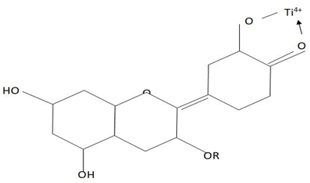Strategy to Select and Grade Efficient Dyes for Enhanced Photo-Absorption
Keywords:
Selection criteria, Dye-grade, Absorbance, Anthocyanin, Photo-absorberAbstract
In this paper, a simple strategy to select and grade efficient natural dye-sensitizers for photo-absorption is developed. The selection criteria help to choose efficient dye for construction of solar cell. On the other hand, the dye-grade technique based on light and matter interaction parameters (absorbance, anthocyanin, and light harvesting efficiency) further reduce the number of dyes for efficient dye-sensitized solar cell (DSSC) production. The result shows that the dyes extracted from witch seed flower (Striga hermonthica), flamboyant flower (Delonix regia), and bitter gourd (Momordica charantia) have dye-grade 1, are the most efficient photo-absorber for enhanced DSSC fabrication while guava peel dye has grade 10 being the least efficient dye. The selection criteria and dye-grade techniques provide surer way of getting promising dyes for effiective DSSC production than choosing the dyes randomly based on some features like their colors and abundance.

Published
How to Cite
Issue
Section
Copyright (c) 2022 A. Babangida, J. B. Yerima, A. D. Ahmed, S. C. Ezike

This work is licensed under a Creative Commons Attribution 4.0 International License.
How to Cite
Similar Articles
- S. S. Oluyamo, O. F. Famutimi, M. O. Olasoji, Isolation and Characterisation of High Grade Nanosilicon from Coastal Landform in Ilaje Local Government Area of Ondo State, Nigeria. , African Scientific Reports: Volume 2, Issue 1, April 2023
- A. M. Magomya, U. V. Elisha, Removal of Azo Dye (Acid Red 18) from Aqueous Solution using a Bioadsorbent from Carica Papaya Peels , African Scientific Reports: Volume 2, Issue 2, August 2023
- Eli Danladi, Muhammad Y. Onimisi, Reuben M. Laah, Imosobomeh L. Ikhioya, High Performance Dye Sensitized Solar Cells by Plasmonic Enhancement of Silver Nanoparticles in ZnO Photoelectrode with Betanin Pigment , African Scientific Reports: Volume 1, Issue 1, April 2022
- A. A. Ibiyemi, B. M. Akinroye, O. P. Oladipo, I. E. Olaoye, M. T. Olatunji, T. I. Ogunniran, A. T. Oladimeji, A. O. Ogungbe, A. S. Olatunde, G. O. Ogunyemi, S. K. Aminu, A. F. Ojo, A. Adewole, J. I. Lawal, A. C. Adeniran, Synthesis and characterization of ZnO crystalline powder: effect on Alkaline pH , African Scientific Reports: Volume 4, Issue 2, August 2025
- Umaru Hassan, Mohd Tahir Ismail, Auwal Saleh Liman, Olayemi Joshua Ibidoja, Multicriteria Decision Making for the Choice of the Global System for Mobile Telecommunication , African Scientific Reports: Volume 2, Issue 2, August 2023
- E. Agboeze, N. P. Ani, E. O. Omeje, Extraction and Characterization of Pharmaceutical Grade Microcrystalline Cellulose From Bambara Nut (Voandzeia Subterranean (L) Thousars) Husk , African Scientific Reports: Volume 1, Issue 2, August 2022
- Christopher Ikechukwu Ekeocha, Ikenna Benedict Onyeachu, Ini-Ibehe Nabuk Etim, Emeka Emmanuel Oguzie, Review of forms of corrosion and mitigation techniques: A visual guide , African Scientific Reports: Volume 2, Issue 3, December 2023
- A. A. Ibiyemi, J. I. Lawal, S. K. Aminu, A. G. Adewole, B. M. Akinroye, A. C. Adeniran, O. A. Abulude, pH treatment on the optical and structural properties of niobium vanadium pentoxide nanoparticles for optoelectronics and energy storage applications , African Scientific Reports: Volume 4, Issue 2, August 2025
- E. A. Kamba, E. A. Yerima, Gas-phase Photocatalytic Oxidation of 1-Hexene Using Heterogeneous Semiconductor Materials , African Scientific Reports: Volume 2, Issue 1, April 2023
- Nwamaka I. Akpu, K. U. P. Okpechi, Elizabeth C. Nwaokorongwu, Imosobomeh L. Ikhioya, Julian C. Onwuzo, Lebe A. Nnanna, Ifeanyi I. C Agbodike, Impact of temperature difference on the features of spray deposited yttrium doped cobalt selenide (YCoSe) thin films for photovoltaic application , African Scientific Reports: Volume 2, Issue 3, December 2023
You may also start an advanced similarity search for this article.




